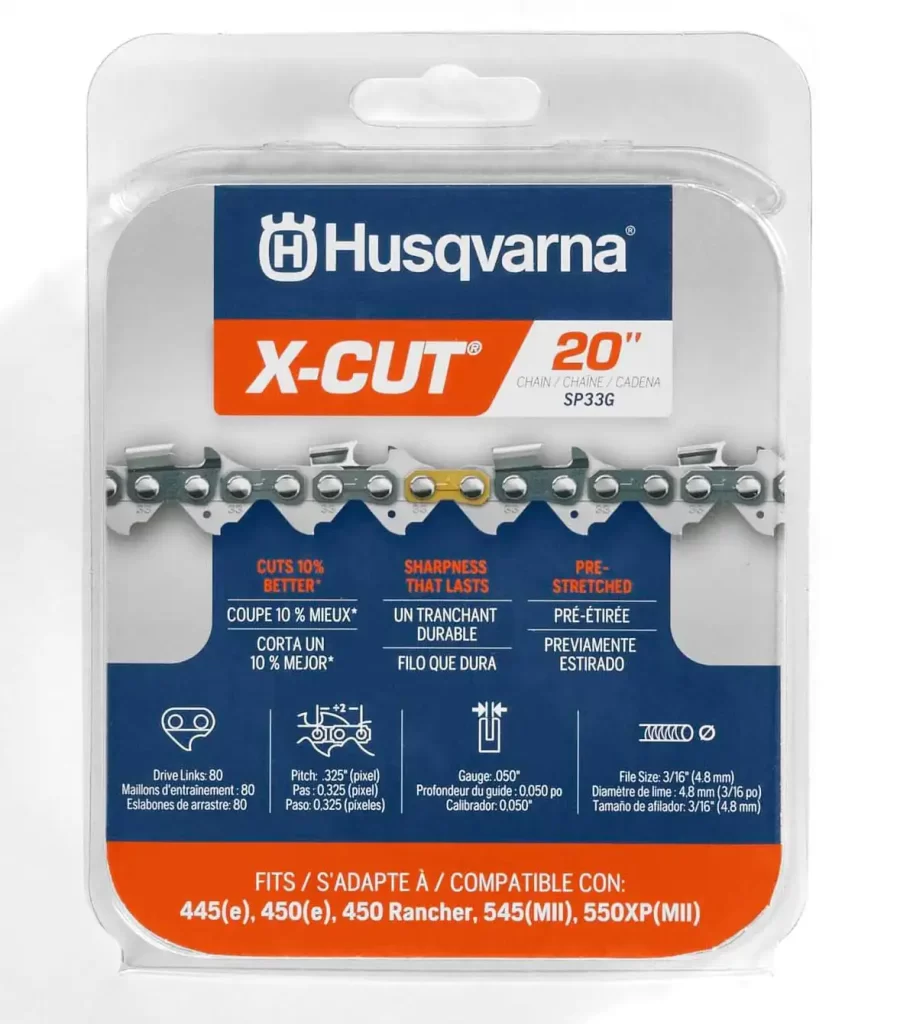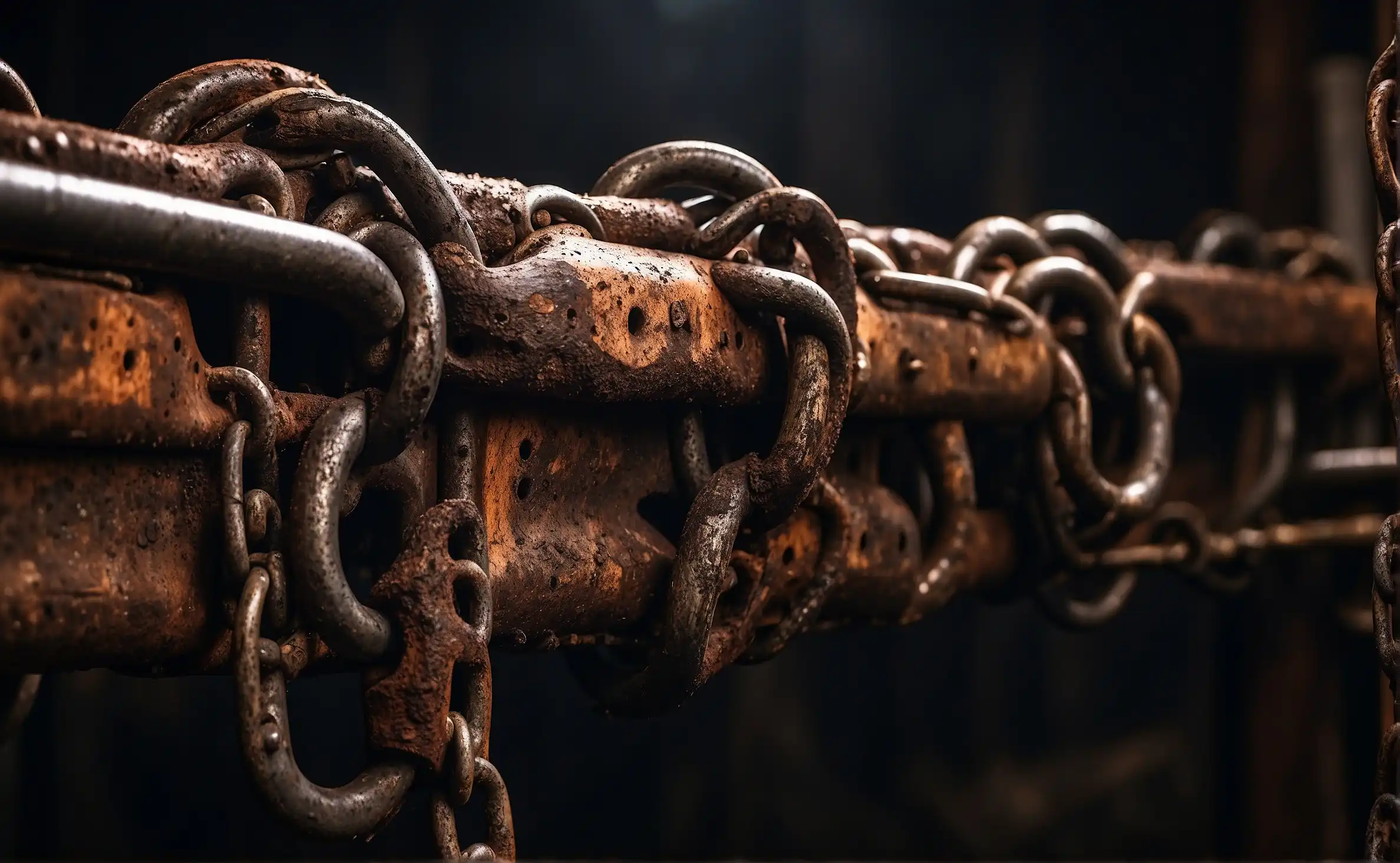Fix a stretched chainsaw chain by adjusting the tension screw or replacing the chain if it’s excessively worn. Ensure your chainsaw is off and cooled down before making any adjustments.
A chainsaw is an essential tool for many tasks, from trimming trees to cutting firewood. Yet, a common issue that arises with regular use is chain stretching. Over time, the metal expands and the tension loosens, reducing the efficacy of your chainsaw.
Maintaining the right tension is crucial for safety and cutting precision. A chain that’s too loose can slip off the bar or cause uneven cutting. Detecting when the chain has stretched beyond its limit requires vigilance and a basic understanding of chainsaw maintenance. We’ll guide you through the steps to rectify a stretched chain, ensuring your chainsaw operates safely and efficiently. Remember, personal safety equipment is a must when handling chainsaw repairs.
About Chainsaw Maintenance
Maintaining a chainsaw is key to its longevity and performance. Like any tool, it requires regular checks and care. One common issue that operators face is a stretched chainsaw chain. A well-maintained saw ensures precision in cutting and operator safety.
Understanding Chainsaw Chain Stretch
Chainsaw chains stretch during use. This is normal but needs attention. Metal heats up and expands when a chainsaw operates. Friction and tension add to this effect. A stretched chain won’t sit properly on the bar. It could slip or snap, which is dangerous. Recognizing and fixing a stretched chain is crucial.
Importance of Regular Chainsaw Maintenance
Regular maintenance keeps a chainsaw running smoothly. It prevents unexpected downtime and accidents. Maintenance includes sharpening teeth, adjusting tension, and checking the chain’s condition. It increases the tool’s lifespan and ensures peak performance. A well-maintained chainsaw saves time and money in the long run.
- Check chain tension before each use.
- Clean the saw after use to remove debris.
- Sharpen the chain as needed for efficient cutting.
- Inspect for wear and replace parts as necessary.
Caring for your chainsaw is simple, but vital. It involves regular checks and quick fixes for stretching issues. By keeping up with these tasks, you ensure a safe and effective tool for your cutting needs.

Identifying a Stretched Chainsaw Chain
A stretched chainsaw chain poses safety risks and hinders effective cutting. Regular use, poor maintenance, or incorrect use can lead to a chain that doesn’t fit well anymore. Recognize the signs of wear and learn to measure the stretching to maintain your chainsaw’s peak performance.
Symptoms of Chain Stretch
Common signs of a stretched chain include:
- Loose fit around the bar
- Difficult to tension correctly
- Saw’s inability to cut straight
- Excessive vibration during use
- Visible wear and tear on the drive links
Measuring the Chain For Stretch
Ensure accurate measurements for correct assessment:
- Remove the chain from the saw.
- Lay it flat on a stable surface.
- Measure a specific number of links with a tape measure.
- Compare with the standard length in the user manual.
- Check for an increase of over 1/16 inch over several links.
Safety Precautions Before Inspection
Always prioritize safety:
- Wear protective gloves to avoid cuts.
- Ensure your chainsaw is off and cool.
- Work in a well-lit, stable environment.
- Use the right tools to remove the chain.
A stretched chain requires immediate attention. Follow these steps to identify and measure for accurate adjustment or replacement.
Tools and Materials Needed For Repair
Tools and materials play a crucial role in fixing a stretched chainsaw chain. Your repair job can be smooth and efficient with the right items at hand. Gather your tools and materials before you begin. This ensures a seamless repair process. Here’s what you need.
Essential Tools For Fixing a Chain
- Chain Breaker: To remove or reconnect chain links.
- Rivet Spinner: For installing new rivets.
- Flat File and Filing Guide: To sharpen chain teeth.
- Chain Adjuster Tool: For tension adjustments.
Materials For Chain Maintenance
- Lubricating Oil: Keeps chain movement smooth.
- Cleaning Solvent: For chain and bar cleaning.
- Rag or Cloth: To wipe away debris and oil.
Setting Up Your Workspace
Choose a clean, well-lit area for your workspace. Make sure it’s free from clutter. Arrange your tools and materials within reach. A sturdy workbench or table proves ideal. Ensure the space is safe for handling sharp objects like a chainsaw chain. Secure your chainsaw horizontally in a vise. This position presents easy access to the chain. It also stabilizes the saw during repair.
Guide to Fix a Stretched Chainsaw Chain
A chainsaw is a vital tool for many tasks. But over time, the chain may stretch. This affects performance. A stretched chain can be dangerous. It needs fixing right away. Follow this easy guide to fix a stretched chainsaw chain.
Adjusting the Chain Tension
To fix a loose chain, start by adjusting the tension:
- Turn off the chainsaw.
- Let the chainsaw cool if it was in use.
- Locate the tensioning screw near the chainsaw bar.
- Use a screwdriver or a chainsaw tool to turn the screw. Tighten the chain.
- The chain should move freely, but not hang off the bar.
- Check the tension every time you use the chainsaw.
Removing Links From the Chain
If tension adjustments don’t work, remove links:
- Wear safety gloves.
- Remove the chain from the chainsaw.
- Find the link you want to remove. Use a chain breaker tool.
- Push the pin out of the link to detach it.
- Remove as many links as needed to make the chain fit snugly again.
Reassembling and Lubricating the Chain
After adjusting or removing links, reassemble and lubricate:
- Put the chain back on the chainsaw.
- Ensure it sits in the guide bar correctly.
- Adjust the tension once more to make sure it’s just right.
- Refill the chainsaw oil reservoir.
- Apply oil to the chain to ensure smooth operation.
- Test the chainsaw to make sure the chain moves correctly.
Proper maintenance keeps your chainsaw in top condition. Always perform regular checks and adjustments to the chain’s tension. A well-cared-for chainsaw ensures safety and efficiency.
Preventing Future Chain Stretch
Chainsaws are powerful tools. To keep them running smoothly, preventing chain stretch is key. A stretched chainsaw chain can hinder performance. It can also be dangerous. Proper care and operation can maintain efficiency and longevity.
Proper Chainsaw Operation Techniques
Using a chainsaw correctly can prevent unnecessary wear and tear. Here are essential tips to follow:
- Read the manual. Understand the manufacturer’s guidelines for your specific model.
- Avoid forcing the chain through wood. Let the saw do the work.
- Ensure chain tension is adjusted according to the manual.
- Use right angles when cutting to avoid uneven pressure.
- Rotate your cutting bar regularly to promote even wear.
Routine Maintenance Schedule
Regular upkeep is critical. Here is a simple maintenance checklist:
| Frequency | Maintenance Task |
|---|---|
| Before each use | Inspect and adjust chain tension |
| Every 10 hours of use | Clean the chain and inspect for damage |
| Monthly | Check sprockets and replace if worn |
| As needed | Sharpen the chain to ensure clean cuts |
Replacing the Chain Vs Repair
Sometimes, the best action is to replace rather than repair. Consider these factors:
- If the chain is stretched beyond adjustment, replace it.
- Consider a new chain if the old one has damaged teeth.
- Replace chains after significant wear to maintain performance.
Always use chains that match your saw’s specifications for safe and efficient cutting.
Learn: Why Did Stihl Discontinue the MS290
Professional Assistance
Professional assistance for a stretched chainsaw chain ensures your equipment functions efficiently. Experts provide insightful tips and replacement methods, enhancing your chainsaw’s performance and longevity.
Choosing the Right Chainsaw Service Provider
| Criteria | Description |
|---|---|
| Experience | An experienced service provider should have years of experience dealing with a variety of chainsaw issues. |
| Reputation | Look for providers with positive feedback from previous customers. |
| Service Warranty | Choose a service that offers a warranty on repairs to ensure the quality of their work. |
| Price | Costs should be competitive yet realistic. Avoid services that seem too cheap to be true. |
| Parts and Equipment | Ensure they use high-quality, brand-specific parts that are compatible with your chainsaw. |
| Customer Service | A provider should be communicative and responsive to your concerns and questions. |
Selecting the right chainsaw service provider is crucial for extending the lifespan of your chainsaw. Conduct thorough research to ensure that you choose a provider with the expertise necessary to handle your specific brand and model. Ask for referrals from fellow chainsaw users or read online reviews to get a clear picture of the service provider’s track record.
FAQs of How to Fix a Stretched Chainsaw Chain
How Do You Change A Chain Link On A Chainsaw?
To change a chain link on a chainsaw, first, ensure the saw is off and cool. Loosen the guide bar to remove chain tension. Carefully remove the damaged link and attach a replacement link using a chain link tool. Re-tighten the guide bar and test the new link for secure fitting.
Can You Unstretch A Chain?
No, once a chain stretches beyond its design limits, it typically can’t be reverted back to its original length. Replacement is often necessary.
Can You Shrink A Chainsaw Chain?
Yes, you can shrink a chainsaw chain by removing links, but it requires specialized tools and skills. Always consult the manual or a professional for guidance.
How Do You Stop A Stretch Chain?
To stop a stretch chain, regularly inspect and maintain the tension, use proper sprocket alignment, avoid overloading, lubricate the chain, and replace worn parts promptly.
Conclusion
Maintaining the integrity of your chainsaw is crucial for performance and safety. By following the steps outlined, you can effectively fix a stretched chain and ensure your tool remains in top working condition. Remember to regularly check and adjust as needed to prolong your chainsaw’s life and maintain optimal functionality.
For more DIY tips and tricks, stay tuned to our blog. Keep your chainsaw spark alive! There’s always something new in our Knowledge section. Happy sawing!
